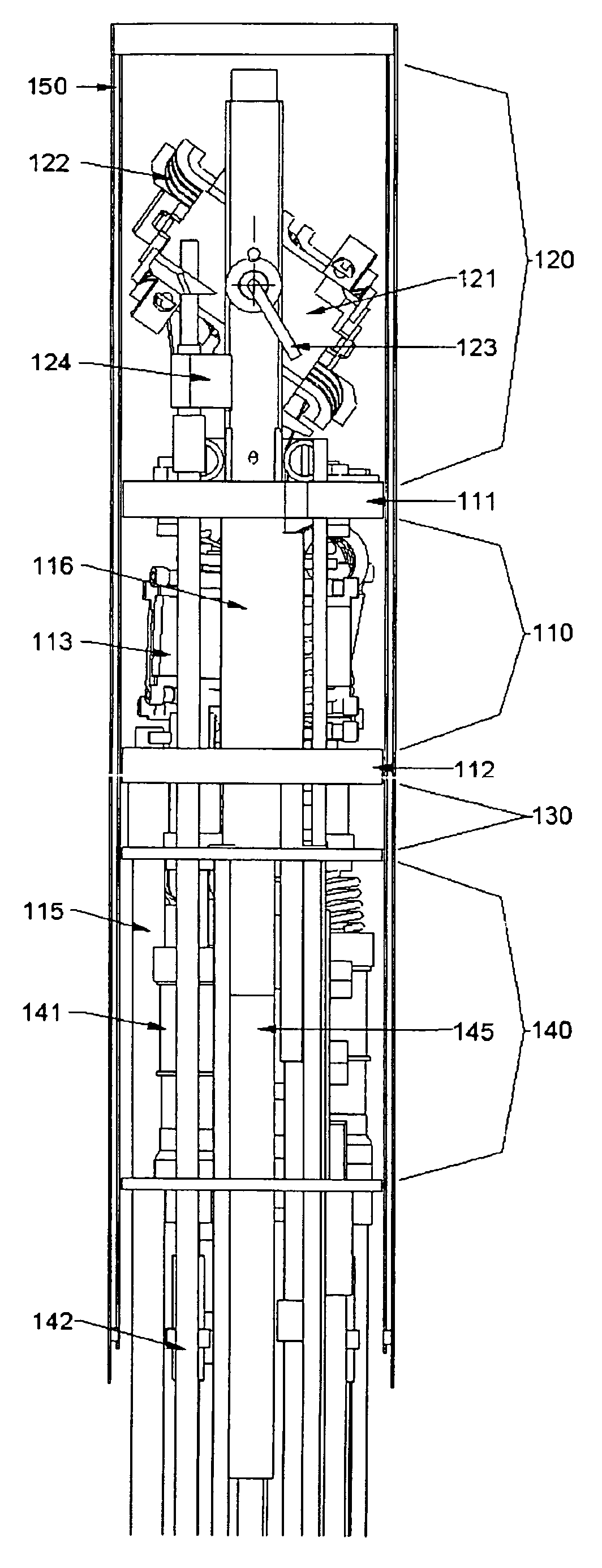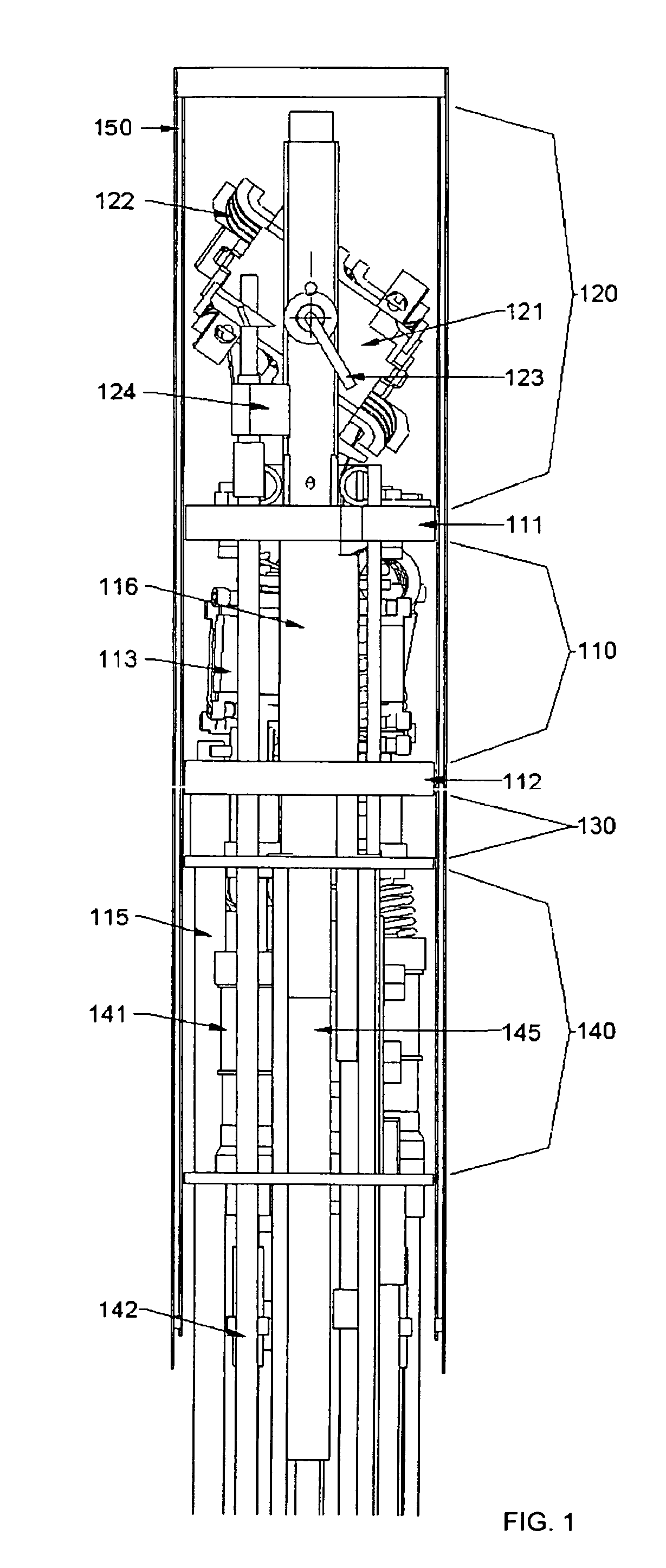NMR MAS probe with cryogenically cooled critical circuit components
a critical circuit component and mas probe technology, applied in the field of mas probes with cryogenically cooled critical circuit components, can solve the problems of inability to achieve cryogenic cooling of sample coils in mas probes in which the sample is not also near the cryogenic temperature of the sample coil, and the inability to achieve similar resolution problems in liquids in inhomogeneous systems, etc., to achieve convenient reduction of thermal noise power and improve signal to noise
- Summary
- Abstract
- Description
- Claims
- Application Information
AI Technical Summary
Benefits of technology
Problems solved by technology
Method used
Image
Examples
Embodiment Construction
[0019]FIG. 1 shows a side overview of the upper portion of the inventive MAS cylindrical probe structure for use in a narrow-bore or mid-bore high-field NMR magnet. Thermal barriers 111 and 112, preferably including foamed teflon, insulate the cold zone 110 from the variable-temperature spinner zone 120 and from the room-temperature first tuning zone 130, which contains variable capacitors for fine tuning of the HF channel and perhaps variable capacitors for a lock channel. A second tuning zone 140 with variable capacitors for fine tuning of the LF and MF channels is preferably positioned below the first tuning zone, though all the tuning elements could be in a single tuning zone. A low-magnetism shield dewar 150 surrounds at least the upper two zones. Note that the views of both FIG. 1 and FIG. 2 could be described as outline views on which a cross-section of the shield dewar is superimposed.
[0020]The spinner zone includes a magic angle spinner assembly 121 and also often includes ...
PUM
| Property | Measurement | Unit |
|---|---|---|
| temperature | aaaaa | aaaaa |
| temperature | aaaaa | aaaaa |
| thickness | aaaaa | aaaaa |
Abstract
Description
Claims
Application Information
 Login to View More
Login to View More - R&D
- Intellectual Property
- Life Sciences
- Materials
- Tech Scout
- Unparalleled Data Quality
- Higher Quality Content
- 60% Fewer Hallucinations
Browse by: Latest US Patents, China's latest patents, Technical Efficacy Thesaurus, Application Domain, Technology Topic, Popular Technical Reports.
© 2025 PatSnap. All rights reserved.Legal|Privacy policy|Modern Slavery Act Transparency Statement|Sitemap|About US| Contact US: help@patsnap.com



